We’ve been generating B2B leads for our own business and our clients for years and we’ve learned a lot along the way! Wouldn’t you love to receive a new business lead from a senior decision-maker in a business with £8 billion turnover, with 30,000 employees? We’re talking through the steps we take to attract leads just like this in today’s episode.

Hi, Pat the podcast editor here. A b2b lead is a common term within the marketing world. Now you may know what this means. So you may not know, one thing you can be sure of is by the end of this podcast, you’ll come away having learned a thing or two. Now in this episode, Dan and Lloyd talk all things leads, giving examples and numbers to back it up.
Lloyd 0:20
Wouldn’t you love to get in front of someone with, I don’t know, an 8 billion pound turnover with 30,000 employees in 19 countries, something like that. Is that literally example for one of our campaigns? Yeah, that lead came in about four days ago. Wow. Lloyd shares his pet peeve when it comes to lazy low effort marketing experts. If you think right, we need a marketing campaign. And you pay your best mates niece 50 quid to put together a marketing campaign because she’s studying Business Studies at A-level like you’ve got to expect the level of detail that she will be able to produce, I think there’s, there are so many minor details that can have a really big effect when you put them all together. Basically, don’t half-arse it, it really does make a huge difference.
Pat 1:04
So, there you have it. By the end of this podcast, you’re guaranteed to have a b2b lead generating machine. And don’t forget to think Pat, the podcast editor in your marketer of the year acceptance speech, here we go. This is episode 102 of the Business Anchors Podcast.
Lloyd 1:22
Welcome to the Business Anchors Podcast.
Dan 1:31
Lloyd.
Lloyd 1:32
Yeah.
Dan 1:33
How can you generate b2b leads from senior decision-makers? And do you have any data to back up what you’re saying?
Lloyd 1:37
It’s funny you asked that actually, because are we going to be talking about that in today’s episode? and I have got data to back that up.
Dan 1:43
Everyone loves data.
Lloyd 1:45
I mean, if you’re trying to get in front of senior decision-makers that have got lots of money to spend with customers, with different companies; wouldn’t you love to get in front of someone with, I don’t know, an 8 billion pound turnover with 30,000 employees in 19 countries, something like that?
Dan 2:03
Is that literally an example from one of our campaigns?
Lloyd 2:06
Yeah, that lead came in about four days ago.
Dan 2:08
Wow. Do you know what I think? Our podcast episodes where we actually include real examples, and not just ours, but any kind of podcast I listen to I enjoy a lot more and they’re… It’s more interesting, So.
Lloyd 2:22
Yeah, so you’re basically happy that I’ve brought this data with me?
Dan 2:25
Yes, yeah.
Lloyd 2:26
I haven’t brought loads of data. But I’m gonna go through examples of basically pulling out examples of a campaign we’re currently running. So a business, that’s in kind of, safety products, we’re not going to say who they are and because they might not want us giving away all the details. But, yeah, we’ve got some data on how that’s going to kind of things we did that might help you if you’re wanting to get kind of b2b leads and new customers and stuff. And kind of talking about when you’re getting in front of those senior decision-makers. So like, not getting in front of like Jim, who works down the road, who runs his own business, and he’s got one employee. Like we’re talking, like I said, like this, the latest, that’s not the latest lead because we’ve had some this morning, but this lead from four days ago for this company, like I said, they turn over 8 billion, and it’s a senior decision-maker there that can be spending, buying these products for countries all over the world and spending hundreds of 1000s or millions or 10s of millions.
Dan 3:26
And we’re gonna be breaking down what we’ve specifically done and why it’s worked so well so that you the listeners can hopefully emulate the success we’re having with campaigns we’re running for b2b brands with your own business.
Lloyd 3:38
Exactly. And just in case you’re wondering, this campaign, we’re going to be talking about a lot and we won’t just talk about this campaign, but this is running through LinkedIn. And as I said, if you’ve got, if your customer, your average customer spend quite a lot of money, it’s ideal because we’re currently with that campaign paying £8.23 per new lead that is asking to sample the products basically asking to become a new customer. And like I said, they’re probably if they if they get these contracts, they could be six-figure contracts that’s quite likely. So to pay £8.23 to have a senior decision-maker in that company saying, “Can I see your products?”, and “Can I give you my information to follow up with me?”.
Dan 4:22
So let’s start with the data. We said data what, can you give us some facts and figures about these campaigns, and then we’ll dive into…
Lloyd 4:31
I can do, my main data point was the one I just said £8.23. That’s the main one but I can give some other information. So for example, as soon as we ran the remarketing campaign for this and actually tried to convert people, we on average, we’re getting one or two leads every day. So this isn’t a thing where we’re spending like six figures, or even five or four figures in… I’m sorry, we are spending four figures, not like hundreds of 1000 in ad spend to get to these people, fairly modest budget of a couple of 1000 that we’re putting into this. And we’re getting a slow drip-feed of people every day going to their website and saying, “Can I please have a sample of your products and have a meeting with you to become a customer.” And as I said, we’ve got multi-national corporations from all around the world that have been coming in the last couple of months. And also a couple of people inside the UK Government and the environmental side of the government and that kind of thing. So the kind of public as well as private companies. But yeah, that’s the sort of thing we’re generating. So I guess what Business Anchors listeners have found useful in the past are when we’re actually talking about stuff like Dan said, where we’re not just like, oh, this is a good idea, this could work. Where we’re like, we are doing this now. And this is what’s happening. So that’s why we’re talking through this.
Dan 6:02
And something I find quite interesting about this campaign. So traditionally, this type of company and what they do, people may say, it’s boring “inverted commas”. We’re not saying that we’re not saying it’s boring.
Lloyd 6:14
No, definitely not.
Dan 6:15
It’s not like your exciting, cool, that kind of thing. It could be known as yeah, pretty boring.
Lloyd 6:22
We don’t talk about safety equipment at parties, do we?
Dan 6:24
We don’t talk about safety equipment at parties. But, what we’ve done differently with this campaign is, we haven’t produced your boring standard corporate content, I think, traditionally, especially on LinkedIn, or with LinkedIn ads, when you run quite a kind of dry or boring business that isn’t that interesting, people tend to produce the types of content that has been produced for years, like talking head videos, oh, look at this nuts and bolts product. Whereas we’ve gone the other way, and been really creative with it. And it works really well. I guess my question to you, Lloyd, is, why do corporate businesses still just run corporate campaigns? Why don’t they try and be more creative?
Lloyd 7:07
It is weird how so many businesses do what do the same thing that everyone’s done for years but expect better results than everyone else. And to be honest, Dan the answer is I don’t, I don’t really have a good answer for why they do that. I think, mainly, it is that thing of this is what we’ve always done. So we’ll do this. But why do you think businesses go for that safe approach that kind of is already proven not to get the brilliant results that they want?
Dan 7:36
I think it’s to reduce risk. And I think that is that classic thing, like you said, if it’s always been done this way, we’ll just carry on doing it this way and getting similar results because it’s not risky to do that.
Lloyd 7:46
You’re a new person going into a marketing role for a business. Are you going to go, okay, let’s carry on what Darren was doing, and see how that goes? Or are you going to say let’s do this radical new approach and risk it completely not working? I suppose it’s judging what to do between not working and working 100 times better. But yeah.
Dan 8:07
Yeah.
Lloyd 8:07
Okay, managing risk.
Dan 8:08
I think that’s how we’ve grown our agency by being that guy or that girl that says, “We’re going to try something radically different and not do the standard stuff.” And as you’ll see from the examples we share in this podcast, it really does work.
Lloyd 8:21
Yeah, it does.
Dan 8:23
So yeah, what other, I guess, insights into this campaign have we got?
Lloyd 8:29
I’ve got five different steps, five things that I think are really key to why we’ve had such success on why we have such successes with this kind of business and generating the leads and new customers they need.
Dan 8:43
So if so I guess I’m just thinking who this is relevant for, Anchors listening. So if you’re part of a b2b business that’s looking to generate leads, and try something new, is this the kind these are the kind of steps that are going to help you?
Lloyd 8:56
A hundred percent.
Dan 8:56
Try something new and generate leads based on successful campaigns we’re running?
Lloyd 9:00
Exactly.
Dan 9:01
Cool. Well, tell me the steps, Lloyd.
Lloyd 9:03
The first, I wouldn’t say it’s necessary step, but the first thing… So we have we’ve had a two-pronged approach. We’ve, and one of them is entertaining and relatable content, and the other one isn’t. So if you’re an Anchors listener, and think, oh, they always talk about that, don’t worry, the other side isn’t that, so to get people’s attention and get in front of the senior decision-makers, we took an entertaining and humorous approach to get their attention. So we created videos that you wouldn’t normally see on LinkedIn, that have a bit of humour in them and are light-hearted and that’s how we were initially getting attention. And because we’re doing something different and creative, we’re getting that attention for a cheaper price, than anyone normally gets that attention for.
Dan 9:52
It makes sense, doesn’t it.
Lloyd 9:52
That makes sense? Doesn’t it?
Dan 9:53
Yeah.
Lloyd 9:54
So when we’re doing this paid campaign through LinkedIn, LinkedIn is thinking oh, people actually find this video interesting, so we’ll charge you half the price to show it to people because it’s helping people have a good time on our platform. So that’s the first step. And where I’m saying we’re going away from what you probably hear from us, and what we do with our business at Knowlton, the way we’ve then retargeted people because this is a safety product that we’re promoting, that is designed to save lives, it’s quite, it’s actually quite a serious thing.
Dan 10:24
Yeah.
Lloyd 10:25
And we’re trying to do some, we’re trying to save lives basically, like literally trying to stop humans dying.
Dan 10:30
Yes.
Lloyd 10:30
So quite serious.
Dan 10:31
Which you don’t really want to joke about that much do you?
Which I’m trying to do.
Lloyd 10:33
Yeah. So when we’re actually remarketing, once we’ve got our product and our brand in front of the customer, then we’re actually going with the informative content that will help people understand what the product does in more detail and help convert those people and think, actually, that could be good for my business. So it’s those two sides, and then because we’re putting all the information they need in front of them, I’ve to make them think, okay, that could actually be good for me, I’m a health and safety manager in this big corporation or health and safety director, whatever they are. And, actually, this says it reduces accidents by 89%.
One of my major tasks in my role I have to do, so I’m going to click and say, yep, can I have a meeting with you? And can you send me some samples? And so it’s those two sides. So we’re managing to convert them for much cheaper because we’re putting everything they need to know in front of them. And we managed to get the attention cheaper at the start because we’re being creative and creating entertaining, relatable, humorous content to get that initial… So that’s the two sides that have come together to make this really work.
Dan 11:40
Something that really got my attention with that campaign and made me actually want to watch the content, and we mentioned data before, is the way that data was included in the visuals of the campaign. So you know, like you said, X percentage saving lives, like, whenever you’ve got data you can share to prove that your service or product does what it says on the tin, include it in your marketing and your communications because that’s the stuff that convinces people, “ah, there’s evidence that’s backing up their claims.”, not just, “We’ve got the best microphone in the world.”
Lloyd 12:13
And a lot of the retargeting was actually done with image ads. So we specialise in video with our company. But obviously, we don’t just say do video for everything we’re like, do what’s going to work the best way for you as a customer. And that last stage to convert a customer in this instance, images have worked really well. And we have included, that data that we know is really important to the job role with the people we’re in front of, like I said, reducing the risk of accidents by 89%, put it in front of someone whose job is to reduce risk of that. And they have bonuses based on how many accidents they reduce. And that kind of thing. Surprise, surprise, it worked.
Dan 12:51
And we always say this, like this is logical. I think a lot of marketers try and overcomplicate things, if you understand who it is you’re trying to convince to do something, what their motivations are, and what drives them, and then get content in front of them that pokes at those things and communicates those things is going to get them to get their attention, isn’t it?
Lloyd 13:12
Definitely. And my next point, I said about how we had this entertaining, humorous content, and then this more serious content, we actually produced a really wide range of content that we’ve been testing. So even at that initial stage, we actually produced some informative content that wasn’t humorous. And we’ve tested that. And we tested lots of different styles of content, we’ve ever produced. So there is content that we produced, that we used for a couple of weeks, and we’ll never use again. And some people might think, well, surely you’re wasting money on doing that. But if you look in the long term, we’re producing more content to test what works better. And so that we have the luxury of saying, right, here’s 100 pieces of content, those 50 don’t produce a really good return on investment when we put them in front of people. These 30 do quite well. And these 10 are absolutely smashing it and making this business loads of money. Without producing the 100 pieces of content, we’re not going to find those 10, we might only find two of those, and have a decreased opportunity to make money and the desired effect for that client. So that’s something we always use and has a really positive result every time.
Dan 14:27
Yeah. Interesting. Lloyd, really interesting. What’s the next thing that you’re gonna…
Lloyd 14:32
Er, this is simple, but you need to put the work in. So I said earlier…
Dan 14:38
Oh, this sounds fluffy, Lloyd.
Lloyd 14:38
Oh, no, don’t worry. It might be you can you can judge it. But I said earlier that so many businesses are doing what everyone else is doing but expecting outstanding results. And when you think about that, that just doesn’t make any sense at all. Like with this. We’ve got a really hard-working intelligent team here and really, really proud of them all, like a proud father, but we put the work in of little things along the way that has produced excellent results at the end of it. So we really put a lot of effort in and we’ve got the right people here to find a way to make safety products entertaining. Obviously, that’s going to take work. That’s not the first idea you come up with within your meeting. That takes work, we had to find a way to get the council to agree to allow us to film with bin lorries, that was an absolute ball-ache so our local council… they’re all right. So those of you that helped us, but very slow and very hard to work with. So we put the time we put weeks into chasing them up to make this happen.
Dan 14:41
It wasn’t just like a call them up, “Are we alright to film your bin lorries?”, it was weeks and months.
Lloyd 15:46
And we put the time in. And to be fair to our client. In this case, they put the time in really outlining who their perfect customer is, allowing us to really target the absolute perfect customer for them and make this whole thing work. And I think there are loads of those things along the way. But it’s that thing of if you put the time and the effort in and the work in the end result, it’s all worth it those little things.
Dan 16:13
But Lloyd, the Anchors listening don’t have any extra time, they’re already overloaded with their work. How are they going to put in the time if they don’t have any time?
Lloyd 16:21
Well, we can do it for you, if you want. We do it very well.
Dan 16:25
I wasn’t actually pushing for you to do that but… but that is a common objective. There’s a common thing people say, I don’t have the time to do this. I don’t…
Lloyd 16:31
Yeah… Well, I would say if so this thing, putting time into this thing, makes you earn loads more money and attract the customers you want to. If you’re spending loads of time now, on customers you don’t want to work with or not earning the money you want to, there’s loads of stuff you’re currently doing that you should start doing is that so analyse what you’re spending your time on, if anything isn’t producing you huge value, find a way of stop stopping doing it and focus on this. Alright?
Dan 17:01
Yeah, good, good. Good.
Lloyd 17:02
Okay. Um, and I, my final point of why I think this works so well, is really that every detail matters. So you know, we’ve said about how much work we’ve put into this, and that we’re testing all this different content, like one word, being different in the sentence of the ad copy that people are targeted with, can make it convert half or double what it would if you didn’t change that word, I think we have focused on the messaging, we’ve said of, oh, this is their job so we need to communicate this. There’s been so much focus on all of the detail of this making sure, it’s so relatable to the people we’re getting in front of. And our client put together this persona of this person, which was such a good start for us to completely understand who we need to get in front of. So I do think those details don’t just go oh, this is nearly over the line. Right. Right, intern, Sandra, can you just write some ad copy? Let’s get it done.
Dan 18:04
Yeah.
Lloyd 18:04
If you’re putting effort into making this work in a project to try and attract customers don’t just kind of fall at the last hurdle and be like, oh, let’s just get it done.
Dan 18:13
Yeah.
Lloyd 18:13
Focus on the detail. It does matter when you’re trying to scale a marketing campaign.
Dan 18:19
I can, this is slightly off the b2b lead topic. But with the podcast, focusing on the detail is becoming a lot more important for us and how we can get as many people listening to this and downloading it as possible. Like before, when we started the podcast, really, it was just trying to focus on producing something good that people enjoy listening to that provides value and the attention was on that. Now that I feel like, we’ve got fairly good at knowing how to provide value and hopefully make this interesting to listen to it’s the smaller details of like, what, how do we chop up the bits of content we create from this? And where do we distribute it and how to get more eyeballs and more listeners to it. So I can relate to that from…
Lloyd 18:59
I think there’s no hack of like putting in no time or effort or money and producing amazing results. Like don’t listen to what people say, you can do this hack and this will happen. Like, don’t if you’re gonna if you think we need a marketing campaign, and you pay your best mates, niece 50 quid to put together a marketing campaign because she’s studying Business Studies at A-level like you’ve got to expect the level of detail that she will be able to produce. I think there’s, there are so many minor details that can have a really big effect when you put them all together. I think don’t yeah, basically don’t half-arse it. Yeah, it really does make a huge difference.
Dan 19:39
Good points, Lloyd. I think something else that might be hopefully interesting to the Anchors, some of the kind of when speaking to business owners, some of the feedback I get is oh, it’s easy for you and Lloyd to make fun creative content that’s interesting to what you’re just like you like doing that your brothers. How can our business that sells nuts and bolts do that? And I think what might be interesting is to share some of the other b2b examples of the kind of campaigns that we’ve run and how we’ve made them interesting.
Lloyd 20:09
Yes. Yeah.
Dan 20:10
And talk through those will hopefully will inspire you to give you some ideas for.
Lloyd 20:15
And also, I think knowing that it doesn’t have to be entertaining.
Dan 20:19
Yeah.
Lloyd 20:19
I’m saying like half of this really successful campaign was completely informative and educational, but done very well and thought about, but yeah, let’s talk. Do you want me to talk through that?
Dan 20:31
I think you… Can I bring up some examples that I think we’ve done a good job with, and that I like? So I won’t mention all the client names. I don’t know if we’re allowed to or not.
Lloyd 20:44
I’d say let’s go for it.
Dan 20:45
Okay, cool. So there’s a company called DesignCloud that we’ve worked with on multiple projects, and we continue to work with
Lloyd 20:52
Brilliant business.
Dan 20:53
Brilliant business, it’s the kind of sort of outsourced designers that you can pay a monthly fee and they wanted us to create a lot of content to run a paid ad campaign to attract new customers. And I really love that product. Lloyd talk us through what we kind of did for that.
Lloyd 21:10
I’ve mentioned before, for Anchors that listen a lot like we take inspiration from things outside of marketing. So we took huge inspiration from David Brent’s character from the office, as we want to make something humorous. Obviously, the office is one of the most successful comedies ever, basically. And so we had, we’re trying to attract agency owners. And so we had the kind of David Brent-esque agency owner, that was, yeah, causing havoc in his agency, basically. But we gave ourselves the opportunity to talk through how working with DesignCloud is really helping that agency and that kind of thing. So we managed to produce a number of different videos that have been run on LinkedIn. And some of you might have seen might seen them, because it’s, it’s worked very well. And I know they’ve been using the content a lot. But yeah, just using that different angle of right, we’re basically shooting a mockumentary, but we’re also finding creative ways to talk about DesignCloud as a business and what they do.
Dan 22:13
And I think it doesn’t have to always be about the product like this is when someone that sells nuts and bolts gets in touch with “how can I make this interesting?” You don’t need to create content about the nuts and bolts, you need to think about who it is you’re trying to attract, for example, in this in this example, agency owners, what do agency owners relate to? What would they find interesting and showing this David Brent-esque character running his agency coming up against certain problems; those problems are highly relatable to agency owners, which made it interesting for the target market to watch. We weren’t just trying to sell their service of hiring designers.
Lloyd 22:49
If your target market, you know that these decision-makers are they’re so low on time, they don’t have time, and your thing saves them time, rather than going here’s three things that are good about my thing, make a whole piece of content about like, oh, here, oh, this person’s got no time. They need more time. Oh, by the way, this saves time. Oh, this person hasn’t got any time, and then it’s really relatable. And you just can briefly mention your thing, because your thing is probably boring. Most of our things are.
Dan 23:17
Yeah, yeah. And another one I really liked. We worked with ECOM Brokers, a broker that helps sell ecommerce businesses. This was a really different concept that I thought was really clever because it was kind of a superhero-esque concept where the villains were representing the other options on the market.
Lloyd 23:42
Yeah so there are four clear other, I suppose, like, were four clear competitors of the sort of business that ECOM Brokers are. So we made those four kinds of groups of competitors into villains, and it’s a classic superhero versus villain and we just use some comedy. And in the way, we kind of named them and portrayed them and that kind of thing. And yeah, obviously it’s really different to what people are used to seeing. It was a lot of humour because a couple of them we kind of we made the villains look quite crap.
Dan 24:16
Villains on a budget.
Lloyd 24:17
Yeah, like as in kind of representing who they did represent like, they’re not that great. They’re just trying to screw you over they’re not going to make you any money.
Dan 24:25
There was one called the consultant goblin. That was kind of a play on the Green Goblin. Yes. And for his hoverboard, we got a skateboard and just covered it in tin foil. Yeah. And just pushed him on it.
Lloyd 24:36
Yeah. Yeah. I think completely different to what you would think but also, if you’re thinking like, oh, I’d love to do something like this and actually produce something creative to promote our business, another thing that you will find out if you go for it is it’s a really fun and enjoyable thing to do with your team that are involved. It’s something that everyone who can of get into and think, oh, wow, right, were shooting this content. We’re doing this really fun creative thing together, and it’s quite uplifting. When we work on creative projects for our own business or our clients, it’s always a real buzz around our studio and the office. And when things are going live, it’s the same. So just another positive for your business, if you do go down this route.
Dan 25:21
Yeah, I think something people forget with b2b marketing as well is that with b2b Marketing, the person at the other end that you’re trying to convince to do something is a person, you know, it’s like business to business, you can’t target a business because a business hasn’t got life, it’s like a human behind it that you’re trying to target. So something we do with all of these kinds of campaigns that we’re talking about is make it relatable to the humans you’re trying to target rather than doing that kind of bog-standard, boring corporate-style content.
Lloyd 25:52
I think another one that’s working well is the HMO roadmap. So this is a sort of educational business around property. And there’s a lot of rubbish people and weird stuff going on in the property space online, where people are selling very expensive courses and adding very little value, or people really don’t have the ethics and morals that, you know, I would certainly aspire to have and teaching people dodgy stuff. And so this client sort of came to us and said, like, I want to promote what we’re doing. But he said, I just want to make sure that we don’t people don’t think we’re like them. If we’re putting stuff out online, how will they know that we’re not one of those? And so we basically just got an actor to play one of those and took the piss out of them. And kind of then said this is what…
Dan 26:48
We’re not this.
Lloyd 26:49
Also, because this target market will be being targeted with loads of that. So we poked fun at that kind of thing. And this guy that we, what did we call that guy in the end? He had a funny name, but probably not good when you can’t think of what his name was.
Dan 27:07
But that allowed us poking the fun and saying, Look at this rubbish thing was a nice segway into, “but here’s actually the good service that we offer to support you with education around property investments.”
Lloyd 27:18
So taking the Mickey in an entertaining, humorous way. And then have we had someone else in the video that’s basically representing an HMO roadmap and saying, okay, yeah, that’s interesting. But this is how we do it here. And we actually try and do good stuff, and we don’t charge all that money. It’s this amount, which is much…
Dan 27:35
I like the testimonials as well, because the thing with the standard property educators that are kind of ripping people off, they have 1000s of five-star reviews, but it’s just people they’ve paid a fiver to do it.
Lloyd 27:48
So we took the mick out of that. And basically, yeah, in the video, we kind of had fake testimonials going, oh yes, I’ve really enjoyed the course. And I’ve made loads of money. Yep. So that’s, that’s Yeah, I think that’s enough examples.
Dan 28:02
Yeah.
Lloyd 28:03
Cool. So, Dan, you’re a big part of your role is actually for our business, like, getting in front of the senior decision-makers to get these b2b leads and stuff. Have you got any more, I guess, steps or any advice to get in front of those senior decision-makers, if people want to do that?
Dan 28:25
Yeah, I guess a few kinds of strategic top-level steps. So I’ve spoke about this before, but the way I’d be thinking about it, if I was listening to this podcast, and I’m trying to target b2b decision-makers, first of all, always start with the who. Who is it you’re trying to convince to do something? This is simple marketing. This is logical marketing. But a lot of marketers kind of skip this step and just want to go to the good stuff. “Let’s create content that’s cool that they’re gonna like”, but really understand that Who. Who is it you’re trying to convince to do something? Once you understand that Who, then you can start to dive into what problems they have that you solve, what kind of language they use, that you can speak to them in that language to appeal to them. And then you can start to create content that’s mapped to their decision-making process to find a solution that you offer. So really think about, you know, like, we’ve mentioned before, an example of Lloyd with his gardening tools, because Lloyd loves gardening. If Lloyd is searching for a new give me a tool that you’re looking for.
Lloyd 29:26
Hoe
Dan 29:27
A new hoe, the garden tool variety.
Lloyd 29:30
That’s why my internet history says that stuff about hoes.
Dan 29:34
Yeah, if Lloyds searching for a new gardening tool, which is called a hoe, what’s the process he goes through? Does he go into a gardening centre to look for that hoe? How does he Google, hoes that I can use for my garden? This isn’t a good example.
Lloyd 29:51
Yeah.
Dan 29:52
Yeah. Oh, like understanding what…
Lloyd 29:53
Hoes in my local area.
Dan 29:58
Have you got those Google searches?
Lloyd 30:00
Yeah, because I was looking for gardening stuff.
Dan 30:02
Okay. So what’s Lloyds’ decision-making process to find a hoe?
Lloyd 30:08
Yeah.
Dan 30:09
To help with his garden.
Lloyd 30:13
This is going off the rails a bit, isn’t it?
Dan 30:13
But you don’t I mean, like, think about who you’re trying to target? What is their decision-making process to find the solution to the problem that you solve?
Lloyd 30:22
Too many businesses before they get to this point, just think, well, we need to tell them how good we are rather than thinking who we who do we need to get in front of and what do they actually want? So it’s like us, you won’t hear from us saying, we make really good videos. I know that we do. That’s something that we do, and most businesses, their whole messaging is, well, you make really good videos. Look at these really good videos, we make really good videos. And obviously, that’s part of what we can communicate subtly. But we very rarely lead with that kind of messaging. It’s normally, you know, for our own business, it’s, we know that the problem that businesses have that we can solve is that they want to find more customers, or they want more sales, or they need a million people to be aware of their brand in the next three months. And they’re a new brand, and no one knows about them. And then we can lead with like, oh, yeah, this problem, this is a really good thing that we do to solve that, rather than we can make a good video for you.
Dan 31:19
Exactly right, Lloyd. So you understanding the Who understanding their decision-making process, then you can create content that’s mapped to that decision-making process and the final step, use LinkedIn ads to target the decision-makers that you want to convince to do something with that content over a period of time, that’s kind of taking them on that journey of, oh, that company solves problems that we need solving. Oh, look at that. They’ve sold it for other companies that we respect, they must be good. Oh look, there’s a case study and a testimonial showing the results they’ve achieved. Oh, now I’m gonna get in touch with them and book a call in with their sales team to see how they can help us it’s that customer journey, and targeting the right content to the right people at the right time to get them to do what you want them to.
Lloyd 32:03
I would think about as well with you mentioning LinkedIn ads, a lot of people in the past have been like Facebook ads, Instagram ads on Instagram, LinkedIn ads, ah they’re too expensive. I would think about this, if you’re a b2b business, a lot of b2b businesses, maybe you sell toilet roll, and your average customer value is £15. So this wouldn’t be relevant. But if you’re a b2b business where you have fewer customers at a higher value, so your average customer value might be 25,000.
Dan 32:32
I suppose so worth it.
Lloyd 32:33
Yeah, like LinkedIn, you can get in front of senior decision-makers, people that will sign off six-figure budgets, potentially, depending on what industry you’re in. And I think people kind of think, Oh, wait, what we got to spend a few 1000 on this is like, think about it, if you if I came to you now and said, I have unlimited people that want to work with you, and they want to pay £25,000. But you’ve got to pay me 2000 pounds for each one. That’s a great deal. Like, a lot of people will go, “What, £2000 to get a new customer?”. By the way, I’m making up this number, it’s not necessarily that but every industry will be different. And every company be different. People go £2000 to get a new customer that is that is crazy. Is it? If you’re gonna make 20 times that on each one? I think it allows you if you have that higher value of customer, it allows you to spend more and get a great return on investment. You can do a test budget when two customers and have a 100 grand income. You know, that’s
Dan 33:35
Yeah, even with the example we shared earlier, just one of those customers converting would cover all of the investment for the campaign.
Lloyd 33:45
So, you know, some people are currently what it was £8.23 or something, people might go, “£8.23 for a new lead? Like that’s, I’m not gonna pay that guy that’s so expensive.” But if you’re a business that’s like, again, I say, “This is my shop. I have loads of CEOs from companies that turn over millions, some of them billions, actually”.
Dan 34:07
Ah, I’ll have one of those.
Lloyd 34:08
“And they’re interested in your product. How many do you want? They’re £8.23 each to have a meeting with.” I mean, I think if you’re a clever business you’re gonna have at least 1000 of them.
Dan 34:18
1000 of those please Lloyd.
Lloyd 34:20
£8223
Dan 34:22
Quick math.
Lloyd 34:23
Thank you. Got anything else good to say Dan?
Dan 34:29
Just that everyone listening should give Adobe Express a go which is our sponsor for the pod. It’s a really great tool for you to help you create all your social content and more.
Lloyd 34:38
I think they should do that too.
Dan 34:40
Cool, anything else for you to say?
Lloyd 34:42
No, I don’t think so. Thank you for listening. There was quite a lot of it’s quite a quite intense episode that one so yeah, if you’re at this point, well done. I think it’ll be worth it for you. But that was more intense and less weird than some of our episodes. So congratulations.
Dan 34:55
We need these ones though. Just chuck in a serious one every now and then.
Lloyd 34:59
Nice because it will change people’s lives.
Dan 35:03
So I guess we’ll see you in your ears next week.
Lloyd 35:06
See you in your ears next week.
Hopefully, you’ve learnt a lot this week. If you have any more questions, then why not start a conversation with us here at Knowlton.























We've always wondered if anyone actually looks at the footer on websites. We don't think many people do. So if you're reading this... You're special.
Knowlton HQ, Unit 62 Maple Leaf, Manston Business Park, Ramsgate, Kent CT12 5GD
© 2024 Knowlton | UK. All Rights Reserved.